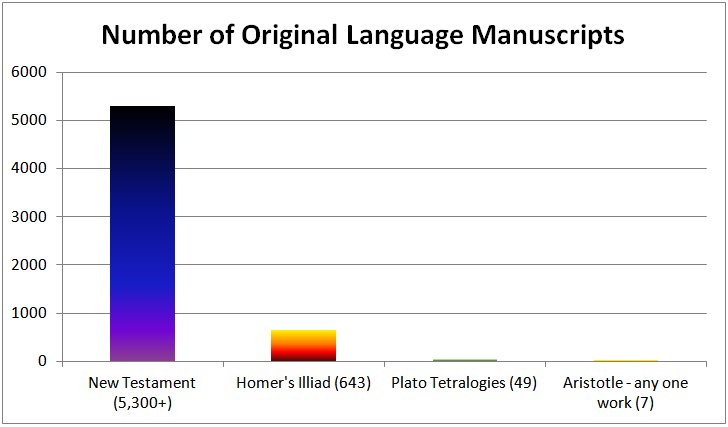I fancy myself committed to the pursuit of truth. Vocationally I spend most of my time in a constant mode of playing a type of “cat and mouse” game (combating counterfeiters and identity thieves) trying to stay in front of the criminal mentality, attempting to catch them, analyzing their tactics…sometimes I win, sometimes I lose, most of the time, being brutally frank, it’s a draw.
Counterfeit: made in imitation of something else with intent to deceive
There are many times where an imitation of something might be acceptable (generic version of a food item)…most of the time however – imitations can and are very harmful and dangerous. In the world of high-fashion a counterfeit Gucci, Coach, Loius Vuitton won’t necessarily get you killed but a counterfeit part in your car – like a vital component that relates to the function of your airbags could.
We’re inundated with imitations whether we realize it or not – some benign, some deadly. It’s the deadly I want to focus on…
There are billions of people on planet Earth being deceived at this very moment by a counterfeit and the consequences are severe. I’m talking – hell severe…and no, all of humanity doesn’t end up in their version of paradise. Every religion outside of Christianity is an imitation. There are many that are easier to spot as clearly not in alignment with the Truth…for others it’s more subtle.
If we don’t invest the time with the genuine (The Bible) then we might be swindled by one of the many counterfeits pervading our culture. How reliable is our standard?
A fantastic summary of this reliability that was done by the Christian Research Institute was one that built off a model using the acronym M.A.P.S.
The first area is (M)anuscripts and how this relates to testing that can be used to assess the reliability of these copies. In the absence of the original documents how can we test to know that the texts that we do have are accurate renditions? We have three tests to use: bibliographic; eyewitness; and external. Quantity and time span between originals and earliest copies is step one. Obviously the more copies the better we can work our way to the original and the shorter the time span between the copy and original the more likely that there has been protection against textual error. Beyond question, the Bible has more and stronger bibliographic support than any other literary work including those of Aristotle, Homer, Pliny, and Tacitus.
Today we have over 14,000 manuscripts (including fragments) of the Old Testament. Roughly 10,000 are from the Cairo Geniza find in 1897, with some documents going back as far as A.D. 800; approximately 190 from the Dead Sea Scrolls, with the oldest dating to 250-200 B.C.; and, at least another 4,300 assorted other documents/copies. Given the short time gap between the original OT manuscripts (completed 400 B.C.) and the first extensive copies (around 250 B.C.) – combined with over 14,000 copies discovered confirms the reliability of this OT text.
We see a similar situation with the New Testament text. Today we have more than 5,300 documents or portions of the NT (Greek) – roughly 800 copies dated before A.D. 1000. The time gap between the initial/original composition and the earliest copies is only 50 or so years!
Below are graphs showing the manuscript authority of the NT compared to other classical works.![]()
Note: Homer’s Illiad is the best attested ancient work after the New Testament. Plato and Aristotle are used in the graph for how well known they are.
The second test, or internal test, addresses the reliability of the authors and their witness to the events they write about. Authors of the OT and NT were either direct eyewitnesses, or had the testimony of eyewitnesses, to most of the events they documented. Moses was directly involved in the captivity in Egypt, the Exodus, and leading God’s people in the desert for forty years. He authored the first five books of the OT.
In the NT the writers had equal first-person experience. In the Books of Luke and Acts Luke says that he gathered eyewitness testimony and “carefully investigated everything” (Luke 1:1-3). Peter states that the disciples “were eyewitnesses of His majesty” and “did not follow cleverly invented stories” (2 Peter 1:16).
External evidence tests go outside the manuscripts to assess their reliability in light of historical events, geographic locations, and the consistency of cultural claims. Different from the writings of other major world religions that don’t have historical references or have fabricated them, the Scriptures refer to actual historical events and presumes their accuracy. Not only is the Bible the inspired Word of God but a history book – with the claims being proved true time and time again.
Events, places, people and customs found in the NT are corroborated by secular history and those that were very close to being contemporaries of the NT writers. Historians like Jewish Josephus (prior A.D. 100), the Roman Tacitus (A.D. 120), the Roman Suetonious (A.D. 110), and the governor Pliny Secundus (A.D. 100) refer directly to Jesus of confirm other historical NT events/references. Church leaders like Clement of Rome, Irenaeus, Julius Africanus, and Tertullian – all writing around or before A.D. 250 – cast light on the NT’s historical accuracy. Notably, even the most skeptical historians concede that the NT is remarkable as a historical document.
Moving on to the (A)rchaeological evidence again we see comprehensive field work confirming the reliability of Scripture. A common occurrence, especially over the past 100 years has been secular scholars having to re-spin their criticism of the Bible in light of the very solid archaeological evidence that continues to emerge. A couple examples – many critics dismissed Daniel sighting the lack of evidence that there was ever a King Belshazzar who ruled Babylon in that particular time period. But, archaeological findings affirm that Nabonidus, the reigning monarch, appointed Belshazzar co-regent while he was gone from Babylon. A good NT example deals with the books of Luke and Acts. Sir William Ramsay, a skeptic, had training as an archaeologist and had set out to prove that the claims regarding the reliability of these books were not founded. However, through his investigations through the Mediterranean he actually became a convert as the historical statements of Luke were found to be true and accurate.
Our third principal is (P)rophecy (predictive ability). In Scripture we see the record of predictions that could not have been known before the fact or guessed by chance or common sense. Interesting to note, Scripture’s predictive nature/qualities were once used as an argument refuting the reliability of the texts. The argument was based on an assertion that the predictions/prophesies were actually composed after the events and that through some clever editing the Bible had been modified look like it had these predictions all along. This couldn’t be more wrong! The prophesies of Jesus’ birth, life and death were undeniably penned more than a century before any of them occurred as proved by the Dead Sea Scrolls of Isaiah and other prophetic work as well as by the Septuagint translation – all of these dating earlier than 100 B.C.
OT prophesies regarding the city of Tyre (Phoenicia) were seen fulfilled, including the city being opposed by many nations (Ezekiel 26:3); the walls destroyed and towers broken (Ezekiel 26:4); and the stones, timbers, and other debris thrown into water (Ezekiel 26:12). Similar predictions were fulfilled concerning Sidon (Ezekiel 28:23; Isaiah 23; Jeremiah 27:3-6; 47:4) and Babylon (Jeremiah 50:13, 39; 51:26, 42-43, 58; Isaiah 13:20-21).
Because Jesus is the ultimate culmination of the OT and the Living Word of the NT it shouldn’t be a surprise that the number of prophesies concerning Him outnumber all the rest. Many prophesies would have been impossible to deliberately try to fulfill – for example His lineage from Abraham, Isaac, and Jacob (Genesis 12:3; 17:19); His birth at Bethlehem (Micah 5:2); His death with criminals (Isaiah 53:12); His pierced hands and feet at His crucifixion (Psalms 22:16); the Roman soldiers gambling for His clothes (Psalms 22:18); His side pierced and yet not a broken bone at His death (Zechariah 12:10; Psalms 34:20); and the burial of Him among the rich (Isaiah 53:9). Christ also prophesied His own death and resurrection (John 2:19-22). This is far from a complete list but as clearly seen predictive prophesy is a principle that has convinced and converted many to accept the reliability of Scripture.
The last principle is one that addresses the (S)tatistical probability that any or all of the very detailed predictions we find in The Bible could have just happened by chance, guessing, or deliberate manufacturing/deceit. The short answer here is that it’s ludicrous in light of the historicity and authenticity of the texts that there could be any conclusion other than: The Bible is in fact The Word of God; Jesus is in fact the one and only Son of God just as The Bible had predicted over and over again.
Scripture was composed over a period of some 1,500 years by forty different writers in three languages on literally hundreds of subjects. Yet there is one undeniable consistent and non-contradictory theme that is seen through all of it – God’s redemption of His creation… people.
GBU – John 14:6




